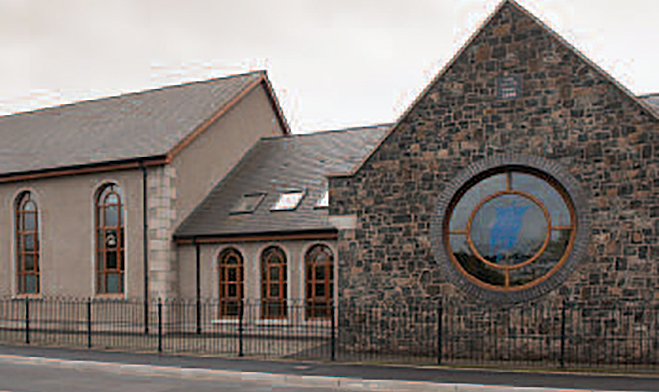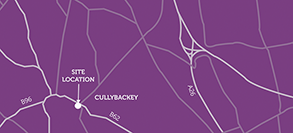Covenanter Trail
Cullybackey Reformed Presbyterian Church
A stroll through the churchyard will well repay the visitor of contemplative habit.
Access details
The churchyard is located off the main Ballymena Road, Cullybackey, and is accessible during the hours of daylight.RPC
Grid Reference
The early congregation
It is thought that Covenanters had been meeting at the Round Hole, Laymore from as early as the 1670s. Cullybackey was part of the Antrim Congregation that was created in 1760, with William Martin as their first ordained minister. When Martin emigrated to America in 1772, the congregation had no ordained minister for 15 years.
In 1787, William Gibson took over the ministry of the congregation and two years later, a meeting house was built at Cullybackey. Gibson was suspected of being sympathetic to the United Irishmen and refused to take the oath of allegiance. He then fled to America where he and others constituted the Reformed Presbytery of America, at Philadelphia in 1798.
The Church
The church that was built in 1789 was sometimes called the 'Pound Meeting House' due to its proximity to a cattle pound. The building was rectangular with a gallery at each end. In 1887, due to an increasing congregation, it was refurbished and extended. In 1929, a new lecture hall was built. The church and lecture hall were demolished in 2007 and the present church was built on the same site.
The first Synod
The early 1800s had been a time of real growth for the Irish Reformed Presbyterian Church. In 1810 it was decided to divide the Church into four presbyteries - Northern, Southern, Eastern and Western. A Synod (council) would be formed to oversee them. Cullybackey was the venue for the inaugural meeting of the Synod of the Reformed Presbyterian Church in Ireland in 1811.
The graveyard
Some of the earliest gravestones in this graveyard can be linked to families who still belong to the congregation. A number of ministers are buried here. The memorial to Rev. Clarke Houston was erected by the congregation 'in testimony of their gratitude for his many affectionate services'. James Wilson dedicated a memorial to the Rev. Hugh Austin ‘his beloved pastor'. It records that Austin was ‘a kind friend and a talented, faithful minister of the Gospel’.



